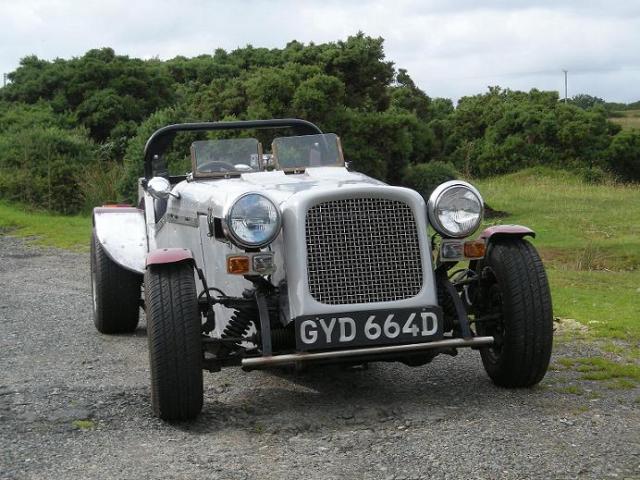Question
 GYD
GYD
I have a couple of problems with my TR2 engined kit car. They may or may not be related! I'm from the UK, summer at the moment, car is garaged so no damp problems.
1. The engine normally starts fine from cold with full choke, however starting from hot is not easy, I usually have to wait until the engine is really cold again. I even had to resort to a squirt of Easy-start last time. Vaporization?
2. Once the engine has warmed up %26 choke is no longer required, the engine is slow to pick up on acceleration. When this happens it improves if I pull the choke out. Above 3000 revs it's ok. I checked points and plugs. Plug electrode area was brown in colour but threaded part was sooty black but dry. The other symptom is lumpy tickover, I've had to adjust the slow running to about 1000 revs, to stop it stalling. This problem only seems to have started in the last few weeks - warmer weather
AnswerHi Dave,
While working in dealerships over the years I found that symptoms will sometimes lead me to an area where a problem is but mostly I find symptoms are often useless info and even will lead you in the wrong direction. Testing is the only method I could use that netted me results.
Especially when you have symptoms that contradict each other as you have. (Warm running that requires some choke to improve acceleration is an indication of a LEAN condition but your plug color indicates a normal to slightly RICH condition.)
If that car was brought to me in a shop I would have to scrap all symptoms and start testing from scratch.
Compression test first (throttle open)(You need to get this done first and don't skip it)
If you have the original SUs on the TR-2 engine you need to look at the needle ID and confirm that is the correct needles for the engine. Examine the carburetors and be sure the float level is correct and the piston slides freely and that you have oil in the top pot. Set both jets exactly the same to start with (about 1/8 in below the bridge surface) Be sure both throttle shafts are in sync.
Adjust the valves to specs.
Set timing to factory specs.
Clean or replace the plugs.
Start the engine and warm it up and set the idle and set the throttle plates in sync.
lift the pin on the front piston and note the engine change. (engine speeds up and stays fast you are too rich on the other carburetor) I know that is not how the books say to do it but do it that way. If the engine dies you are either too lean or you didn't sync the throttle plates well enough. When it is correct the engine will drop down in RPM and start running like an old two cylinder tractor. Remember that when you are lifting the pin on the front carburetor you are testing the rear carburetor. When you can get a decent idle and lift either pin, you will get a RPM drop and it will sound like an old John Deer tractor. Rev the engine between each adjustment to clear the engine.
As far as a hot restart if it is hard to restart but all other performance is ok then you should give a spray shot of starting fluid into the intake to see if it is a lack of fuel causing the problem. If that don't start the engine get it hot again and shut down and let is sit just a few minutes (or how ever long you noted the no start) and quickly look at the plugs for wetness and check the float level to see if the heat of the still engine is boiling the fuel out of the float chambers before you try to restart.
Somewhere in one of these tests you should find the problem. If you are getting all of the fuel in the float chambers boiling after stopping hot then you should consider a delay turn off fan and a electric fuel pump (1.5 to 3 PSI not more)
Nice looking car.
Howard
